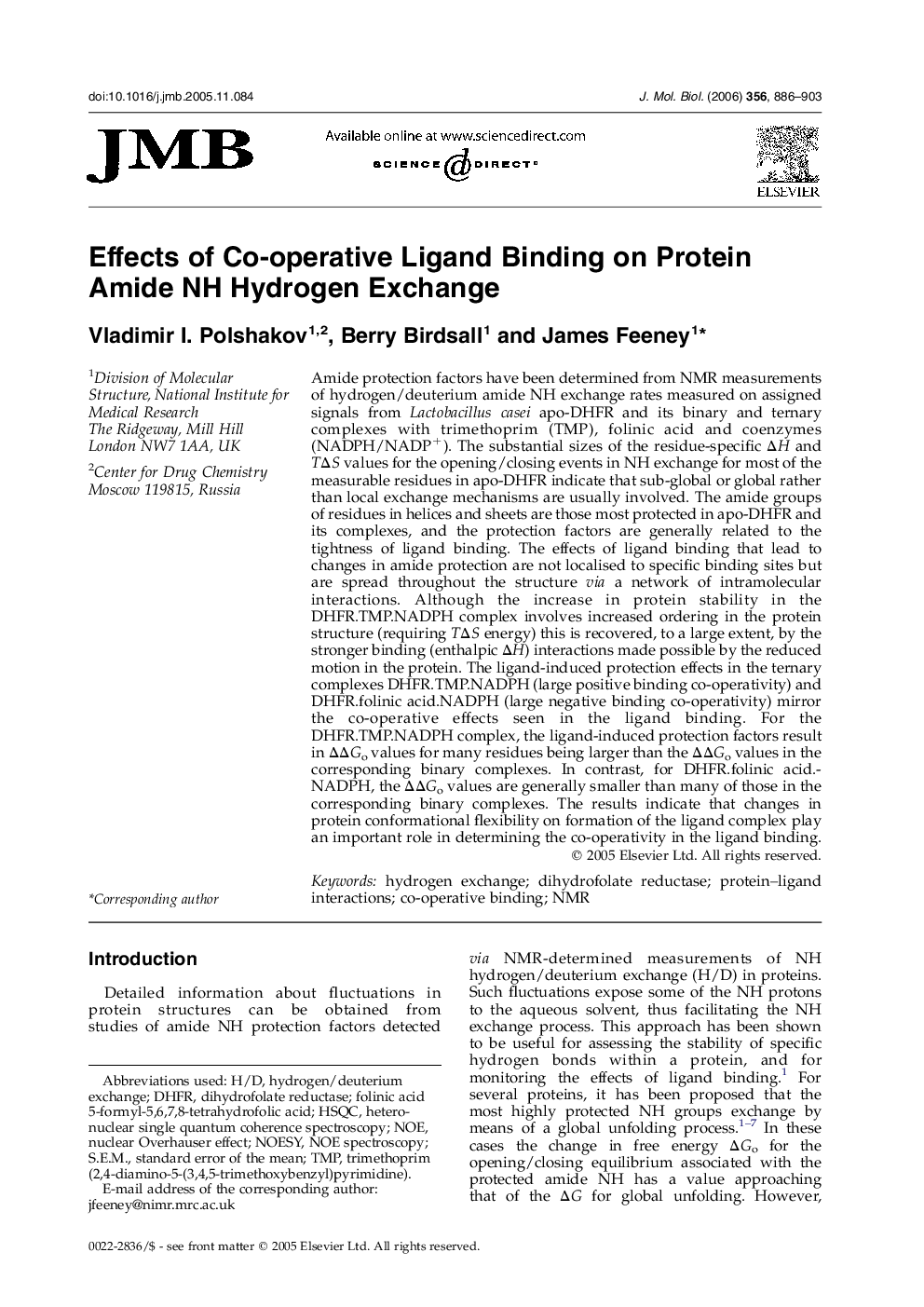| Article ID | Journal | Published Year | Pages | File Type |
|---|---|---|---|---|
| 2189881 | Journal of Molecular Biology | 2006 | 18 Pages |
Amide protection factors have been determined from NMR measurements of hydrogen/deuterium amide NH exchange rates measured on assigned signals from Lactobacillus casei apo-DHFR and its binary and ternary complexes with trimethoprim (TMP), folinic acid and coenzymes (NADPH/NADP+). The substantial sizes of the residue-specific ΔH and TΔS values for the opening/closing events in NH exchange for most of the measurable residues in apo-DHFR indicate that sub-global or global rather than local exchange mechanisms are usually involved. The amide groups of residues in helices and sheets are those most protected in apo-DHFR and its complexes, and the protection factors are generally related to the tightness of ligand binding. The effects of ligand binding that lead to changes in amide protection are not localised to specific binding sites but are spread throughout the structure via a network of intramolecular interactions. Although the increase in protein stability in the DHFR.TMP.NADPH complex involves increased ordering in the protein structure (requiring TΔS energy) this is recovered, to a large extent, by the stronger binding (enthalpic ΔH) interactions made possible by the reduced motion in the protein. The ligand-induced protection effects in the ternary complexes DHFR.TMP.NADPH (large positive binding co-operativity) and DHFR.folinic acid.NADPH (large negative binding co-operativity) mirror the co-operative effects seen in the ligand binding. For the DHFR.TMP.NADPH complex, the ligand-induced protection factors result in ΔΔGo values for many residues being larger than the ΔΔGo values in the corresponding binary complexes. In contrast, for DHFR.folinic acid.NADPH, the ΔΔGo values are generally smaller than many of those in the corresponding binary complexes. The results indicate that changes in protein conformational flexibility on formation of the ligand complex play an important role in determining the co-operativity in the ligand binding.
